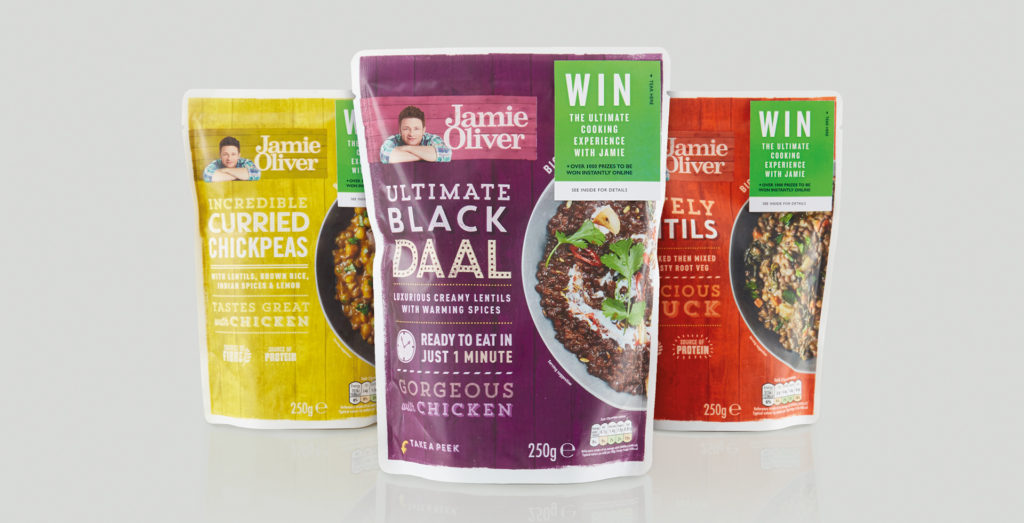
18 April 2024 /
Running A Successful Prize Promotion – Ten Top Tips
Author: Will Williams
When it comes to shopper promotions, knowing your target audience is one thing, getting them to engage is something else. Here, Davison Williams shares a few tips on what can make or break a promotional campaign.
1. How To Stand Out Instore
When you only have seconds to capture the attention of consumers, it helps to keep brand communications as simple and easy to understand as possible, and messaging hierarchy plays a hugely important role.
1) Put yourself in the shopper’s shoes – what’s likely to grab your attention?
2) Lead with a single-minded appealing/motivating offer and decide what should be considered secondary information. Do you have a fantastic prize pot or a ‘money can’t buy’ experience to give away, or would it be better to focus on a unique creative idea to create cut-through and grab the shopper’s attention? Whatever you decide, avoid ‘information overload’ and keep your headline message short and sweet. If an idea can’t be explained in a simple, short sentence, the promotion will likely fail in a busy retail environment.
Simplicity should, of course, extend to the entry process too. Clearly communicating what consumers need to do to enter and highlighting what they could win is important, but this doesn’t necessarily need to be part of the headline message.
2. Don’t Ditch The Data, But…
The purpose of most promotions is to seek out new customers and drive brand awareness, with the added bonus of an upturn in sales during the promotional period and beyond. To maximise the long-term impact of your campaign, ask yourself if the idea is a good fit for your brand and consumer.
You’ll know your brand better than most and will likely have a mass of consumer data to hand. There’s little doubt about the benefits data insights can bring to a promotion, but all data is historic, based on everything that has gone before. So, by focusing purely on the science, there’s always a risk creative thinking and breaking new ground are compromised.
The takeaways here: In addition to data, have faith in creative ideas; don’t forget the importance of making emotional connections; and, yes, trust your gut instinct. If your initial reaction to an idea is positive, chances are your consumer will feel the same way.
3. Brand Guidelines – There To Be Broken?
While maintaining consistency in branding is crucial for establishing brand identity and recognition, there are instances where introducing a dedicated campaign look and feel, that works in harmony with the guidelines, can help achieve standout in extremely competitive environments and inject some freshness into your marketing efforts.

4. Make The Most Of The Available Space
Maximising the impact of any promotion relies heavily on carefully considered typography, layouts, and engaging copywriting.
It sounds like an obvious point, right? But, if you’re planning an on-pack promotion, words and images need to work especially hard when you consider the environment. It’s essential to avoid over-complicating designs. Simplify wherever possible, as overly intricate designs will only serve to detract from the intended message.
5. Consider Making Every Participant A Winner
Providing secondary incentives not only makes participants feel valued but also enhances brand engagement. Even if consumers don’t win the top prize, the opportunity to receive a coupon or discount against their next purchase encourages them to interact and participate actively. Offering something of value can also foster a sense of loyalty amongst participants, and lead to positive word-of-mouth referrals. Of course, this doesn’t apply to everyone, there will always be the deal-seekers.
However, in general, the positives outweigh the negatives when the aim is for everyone to come away with something, not to mention the uplift in sales. One of our most recent campaigns achieved a 34.2% coupon redemption rate (versus 10% sector benchmark), helping drive sales and increasing the number of positive brand experiences.
6. Timing Is Key
Great promotional ideas can fall at the first hurdle if everything is not carefully planned in advance and ready for launch. Make sure stock levels are managed, any point-of-sale (POS) materials are prepared for launch, and retailers are fully aligned to avoid delays or drip feeding a campaign into the market.
7. Brand Relevance
Often, promotions can be closely aligned with the product name, function, or status, but they could just as likely be linked to brand activities, such as partnership and sponsorships, which in turn helps broaden the scope for creative ideas. Partnering with other brands also allows businesses to tap into new audiences and reach customers who may not have been previously aware of their products.
Take our E&J Brandy promotion, for example. E&J Brandy wanted to attract and entice a younger audience. Our collaboration with Sony, combined with our innovative headphone neckhanger design, resulted in 61% of entrants aged 45 or under, with 41% purchasing the brand for the very first time.

8. T&Cs – Don’t Get Caught Out
Let’s face it, nobody wants to receive negative feedback. It’s a pain for all parties involved, so always refer to the CAP code of conduct when finalising the terms – make sure there’s no ambiguity, the T&Cs are fair, and, of course, legal in the territory they appear. All promotions will require significant terms to be featured at the point of purchase, often with the full terms & conditions available online (via a link). Make sure both the short and full versions match and are consistent across all touch points and stores (if running in more than one retailer).
9. Consistency Is King
When planning a promotion, it’s crucial to consider the multitude of formats and environments where it may appear. From print media to digital platforms, each touchpoint offers a unique opportunity to engage with consumers. However, maintaining consistency across these diverse formats can be challenging. Consistency across different formats not only enhances recognition but also builds consumer trust in the brand and its offerings. When consumers encounter consistent messaging and branding, it reinforces both the brand’s reliability and professionalism, which, over time, ultimately leads to trust and increased conversions.
10. Print Mechanics
Printing small items in bulk presents designers with an opportunity to get creative. When multiples of on-pack neckers, for example, are printed and ‘planned-up’ at the same time, designers have the opportunity to apply a different colour to each template, delivering a more eye-catching display instore. Take our promotional necker for the baby food brand, For Aisha. A range of different coloured baby-bib designs were created to add interest and create standout on shelf.
Of course, this approach and opportunity is not suited to all promotions, but it’s an easy one to overlook.
To find out how Davison Williams can help you with your instore branding and promotions email: will@davisonwilliams.com